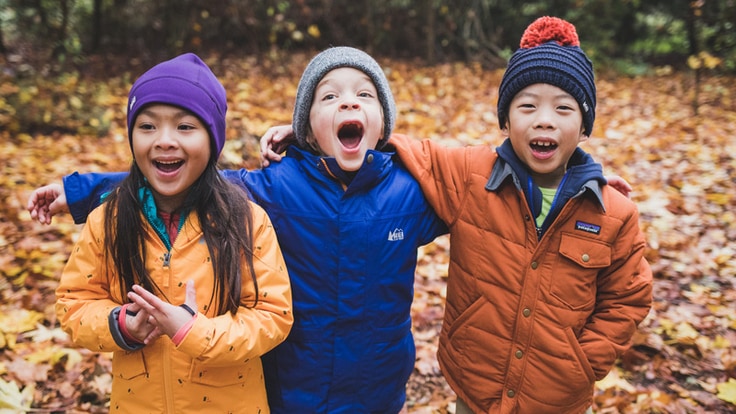A comfortable kid outdoors is a happy kid outdoors. One key to keeping them comfortable is making sure they're dressed appropriately for the conditions. But knowing how to outfit your child for the outdoors, where the weather can quickly change from hot and sunny to cold and wet, isn't always simple, especially given that a child may not be able to tell you if they are hot or cold. That said, there are some guidelines and tips that should help set your child up for a successful outdoor experience. (Oh, and snacks. Don't forget the snacks.)
Choose Synthetics or Wool Fabrics
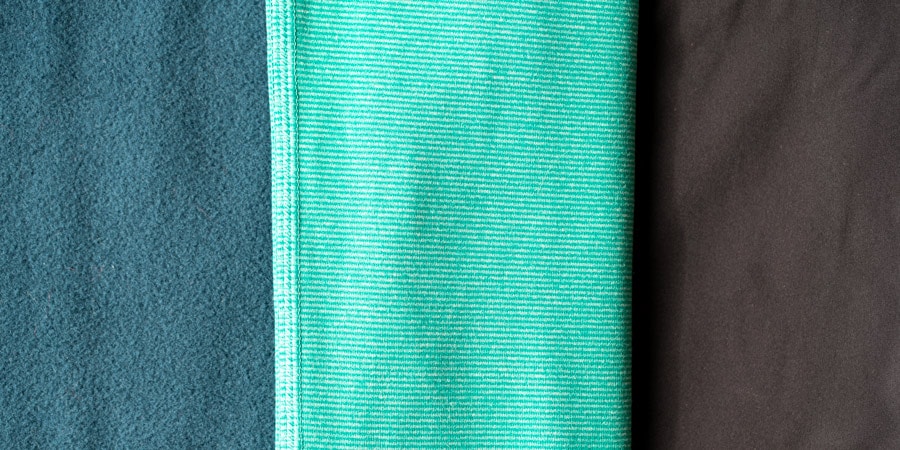
For a casual outing on a pleasant, dry summer day, cotton clothing can be okay. But for active adventures or if the forecast calls for rain and/or cold temperatures, dressing your kids in clothing made from synthetics or wool is the way to go. These fabrics wick moisture and dry quickly, keeping your child more comfortable if they're working up a sweat or getting wet from rain or snow. Here's a quick primer on common fabric choices (to learn more, see our article What to Wear Hiking):
Wool: Basic wool clothing can sometimes be itchy, but wool items designed for the outdoors often use soft, ultra-fine merino wool that's itch-free, breathable, moisture-wicking, fast-drying and odor-resistant.
Synthetics (polyester and nylon): Clothing made from synthetics like polyester and nylon tends to be good at wicking moisture and very fast-drying. It's also usually more affordable than wool. However, synthetics often hold onto odors more than wool.
Cotton: Cotton is comfortable next to skin but should typically be avoided for active outings. It takes a very long time to dry and is a poor insulator, so if you get wet from sweat or rain, it can leave you shivering for hours.
Dress Your Kids in Layers
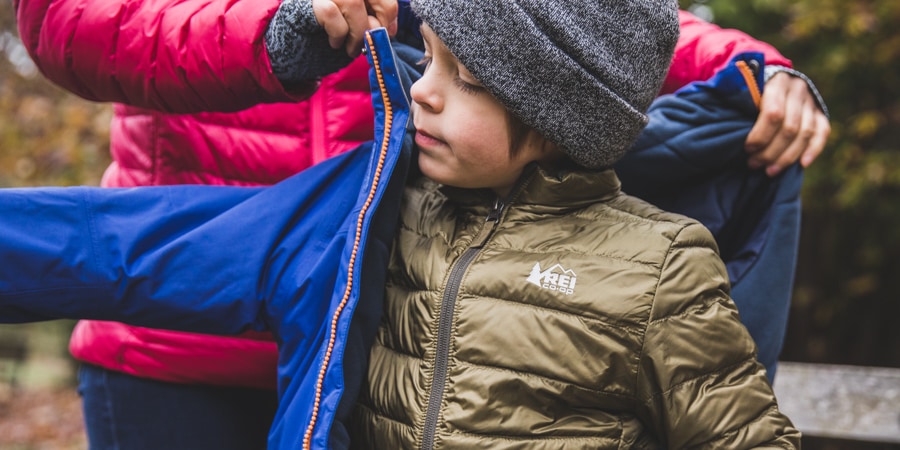
Your kids can benefit from the same outdoor strategy you use—mixing and matching layers to adapt as conditions change. Simply put, add layers if your child is cold and shed them when they heat up. You can learn more about layers in our article, Layering Basics, but here's the gist of it:
- Wear a base layer. This is your underwear layer that wicks sweat off of skin. In cold conditions, this layer can be a synthetic or wool wicking long-underwear base layer that provides warmth and keeps skin dry. In warm weather, a base layer can be synthetic or wool underwear and a T-shirt.
- Wear a middle layer. This layer retains body heat to protect against cold. Things like fleece jackets and puffy insulated jackets are common middle layer pieces. In general, thicker (or puffier) indicates more warmth. How warm you plan for your middle layer depends mostly on the weather you anticipate encountering.
- Wear an outer layer. This is the layer that provides a shield against wind, rain and snow. An outer shell is an important piece because when wind and water get into middle layers and base layers, that can leave your child seriously chilled. A shell that is not only waterproof but also breathable is essential for keeping an active kid comfortable; non-breathable shells (such as rain ponchos and plastic slickers) can leave them wet from the inside out because moisture from sweat can't escape.
Exactly what your child needs to wear outside depends on lots of factors, including age, activity level, personal metabolism, outside temperature, wind speed and more. The examples below are for an average kid old enough to head down the trail under the power of their own two feet. (A note about infants: Babies don't move around as much as older kids and adults, so they can't generate as much heat. Be sure to consider this when dressing them for outdoor adventures. In general, infants need to wear one more layer than you do.)
Cold-weather layers for kids:
- Midweight polyester or wool long underwear top and bottom
- A midweight fleece jacket or insulated (synthetic or down) jacket
- Midweight fleece pants
- Waterproof/breathable rain jacket and pants (or snow jacket and snow pants)
Rainy-weather layers for kids:
- Lightweight polyester or wool long underwear top and bottom
- Lightweight fleece jacket
- Synthetic hiking pants
- Lightweight waterproof/breathable rain jacket and pants
Hot-weather layers for kids:
- Synthetic or merino wool regular underwear and short-sleeve T-shirt
- Convertible quick-dry nylon hiking pants
- Long-sleeve quick-dry sun shirt and/or lightweight wind jacket
Get the Right Fit
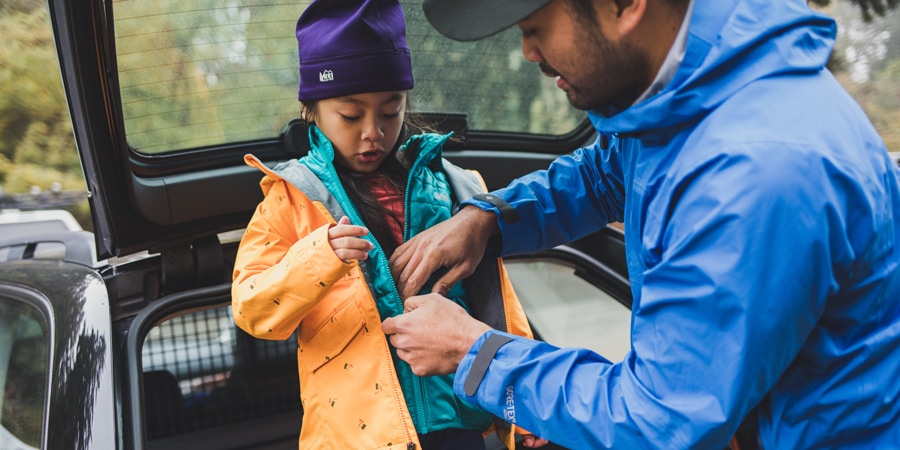
To keep your kids hiking, running, climbing, jumping around and having all sorts of fun outdoors, it's important to get clothes that fit them well. Ill-fitting clothes can be uncomfortable and perhaps even dangerous; you don't want your little ones tripping over pants that are too long. The first step in finding clothes that fit well is to understand kids' size charts.
How kids' size charts work: Kids' clothing manufacturers often have slightly different ways of handling sizing, which can make it very confusing. Here are some pointers to help you decipher these charts:
- Baby sizing is based on age. You'll typically find clothes for babies between ages 0 and 24 months. Some include an age range, like 3 - 6 months. If you don't see a range, it's safe to assume that the number listed is the maximum age that the piece is designed for and will likely fit kids up to 3 months younger than that. But since all babies are a little different, buying clothes solely based on age can be misleading. When shopping, it's helpful to find a brand-specific size chart that includes weight ranges and measurements.
- Toddler sizing includes a T. When you see a T next to the size number (e.g., 2T), you know that's a toddler size. Many manufacturers make three toddler sizes: 2T, 3T and 4T. But, sometimes you'll see 5T.
- Kid sizing starts at 4. The overlap of kid sizing and toddler sizing can be confusing for many parents. Should you buy a 4 or 4T? To know, it's important to look at a brand-specific size chart so you can understand the differences. With some brands, 4 and 4T are exactly the same. With others, toddler sizing has more room in the seat of the pants to accommodate a diaper. Still others design size 4 for taller kids than 4T.
For reference, here's the REI Co-op size chart for babies and toddlers, and below that, the size chart for kids:
REI Co-op Baby Clothing Size Chart
| 3 Months | 6 Months | 12 Months | 18 Months | 2T | 3T | 4T | |
|---|---|---|---|---|---|---|---|
Height Range* | 24 | 27 | 30.5 | 33 | 35 | 38 | 41 |
Weight Range | 6-10 lbs. | 10-15 lbs. | 15-20 lbs. | 20-25 lbs. | 28-32 lbs. | 32-35 lbs. | 35-40 lbs. |
Chest | 17 | 18 | 19 | 19.75 | 20.5 | 21 | 22 |
Waist | 17.5 | 18.5 | 19.5 | 20.25 | 21.5 | 22 | 22.5 |
Hip | 17.5 | 18.5 | 19.5 | 20.25 | 21 | 22 | 23 |
Inseam | 8.5 | 10 | 12 | 13.5 | 14 | 15.75 | 17 |
*all measurements in inches
REI Co-op Kids' Clothing Size Chart
| XXS (4-5) | XS (6-7) | S (8) | M (10-12) | L (14-16) | XL (18) | |
|---|---|---|---|---|---|---|
Numerical Size | 4-5 | 6-7 | 8 | 10-12 | 14-16 | 18 |
Height Range* | 41-44 | 46.5-50.5 | 52 | 55.5-58.5 | 62.5-64 | 67 |
Chest | 22-23 | 24-25.5 | 26.5 | 27.5-28.5 | 30.5-32 | 33.5 |
Waist | 22-22.5 | 23-23.5 | 24.5 | 25.5-26.5 | 28-30 | 32 |
Hip | 23-24 | 24-27.5 | 28.5 | 30-32 | 34-36 | 38 |
*all measurements in inches
Shop for Durability
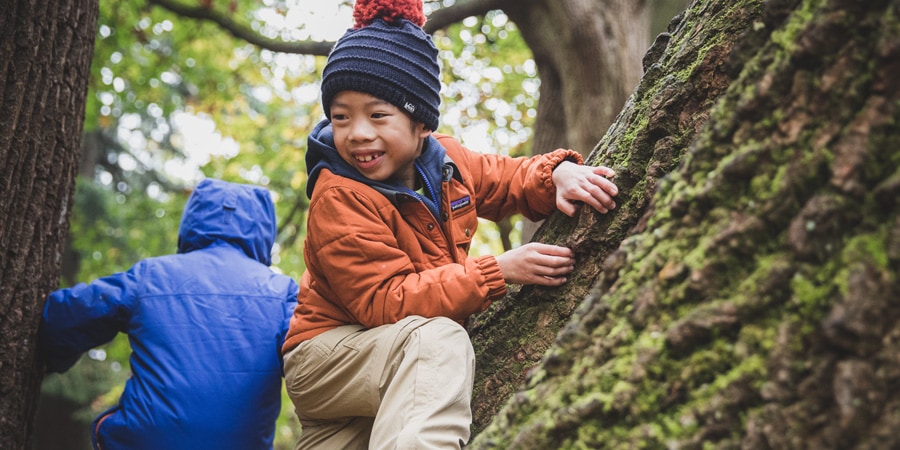
Quality kids' clothing that's designed for outdoor use often has built-in features that ensure you get lots of use. This includes things like reinforced seats and knees and quality fabrics that won't tear easily. Purchasing durable products not only ensures the gear will keep up with the child you bought it for, but it also will very likely last long enough to be passed down to a sibling, or sold or donated.
Be Thrifty
Outdoor brands understand that you can't afford to buy the priciest tech, like 900-fill-power down jackets or Gore-Tex® shells every season for your child, so they aid the cause by including quality, nonbranded technologies that perform perfectly fine. Here are a few budgetary tips you can also employ:
- Hunt for hand-me-downs. Siblings, extended family, friends and neighbors are all fair game. Look at consignment shops or online resellers, too. Even saving a few dollars on a cap or pair of mittens can help.
- Double-purpose other apparel. Synthetic pajamas can serve as a base layer; thick wool socks can serve as crude mitts for infants or toddlers; old fleece outerwear can be cut up for use as a neck gaiter.
- Look for features that help hold onto gear. Glove leashes that clip mittens or gloves to a jacket sleeve are one example. And built-in ID labels are a feature that can spare you a futile trip to the lost and found closet at school or daycare. (Add your own if a garment doesn't come with one.)
Get Clothes That Are Easy to Put On
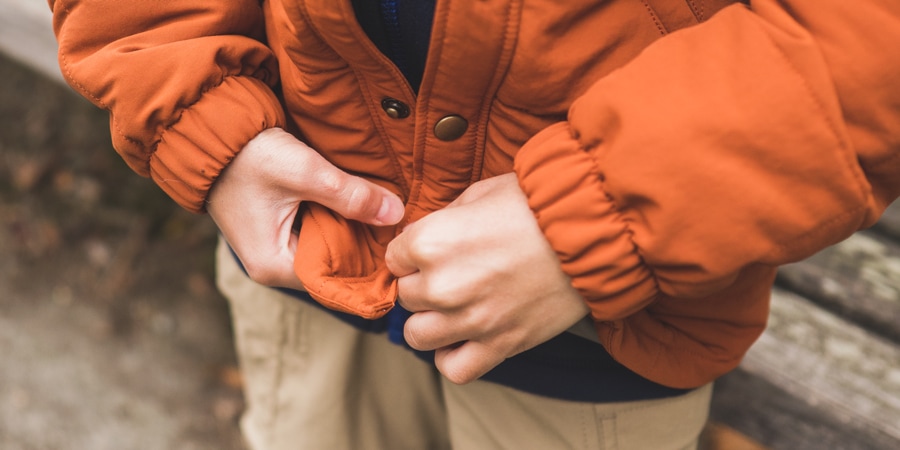
Dressing a wiggly kid who can't wait to get outside can be a struggle. When shopping for kids' clothing, look for features that make getting the items on easier. Things like elastic cuffs, waists and hems help seal in warmth but don't require you to fuss with adjusting waist cinches or cuff tabs. For infants and toddlers in diapers, you'll want to also consider how easy it is to get to the diaper. Clothes with strategically placed snaps and/or zippers help.
Plan for Growth
Quality clothing items are going to be durably built, so your kids will outgrow them before they wear them out. Here are a few fit strategies to avoid reinvesting in an entirely new set of winter outerwear each year:
- Look for extendable sleeves and cuffs. Brands have their own names for a feature that allows you to add 1.5 to 2 inches to the arms or legs on a garment, which can buy another season of use. You see this in toddler-size products, as well as older kids' outerwear, and primarily in insulated pieces or snowsports items rather than rainwear, fleece or down jackets.
- Buy items slightly larger. A half or even a full size can work for a middle or outer layer. Don't get carried away, though, because items that are way too big won't keep kids very warm and can get in the way while your child is running around outdoors. And don't buy base layers that fit too loosely because they need to be in contact with skin in order to wick sweat.
Buy Clothing for Sun Protection
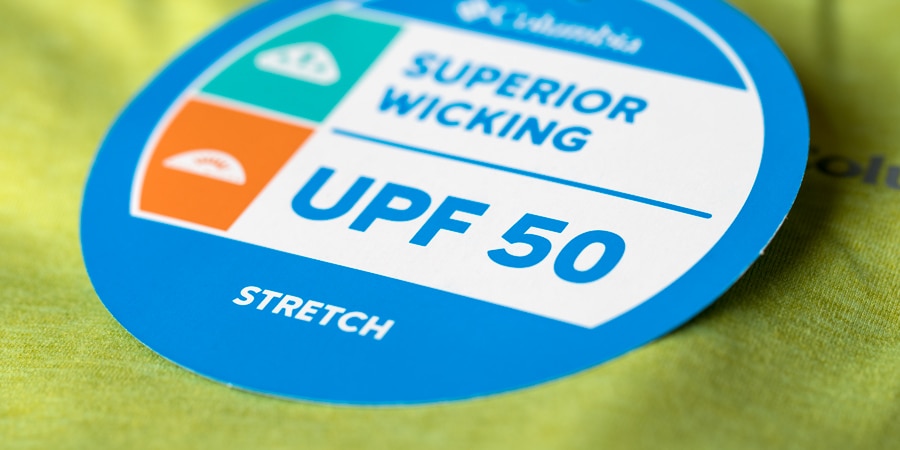
Kids have thinner, more sensitive skin than adults, so it's important to think about their exposure to the sun's ultraviolet rays any time you're outdoors. Clothing is a very effective way to add protection, and buying clothes that have an Ultraviolet Protection Factor (UPF) rating assures you of the protection it's providing.
Wearing UPF-rated clothing can be used along with other methods, such as wearing sunglasses and a sun hat and applying sunscreen.
Find Reflective Accents for Better Visibility
When days get shorter and darkness sneaks into morning and evening hours, reflectivity becomes more important. With today's technology, all it takes is a little reflective logo or piping on a jacket to make it very visible when a pair of headlights sweeps across it.
Get the Right Footwear
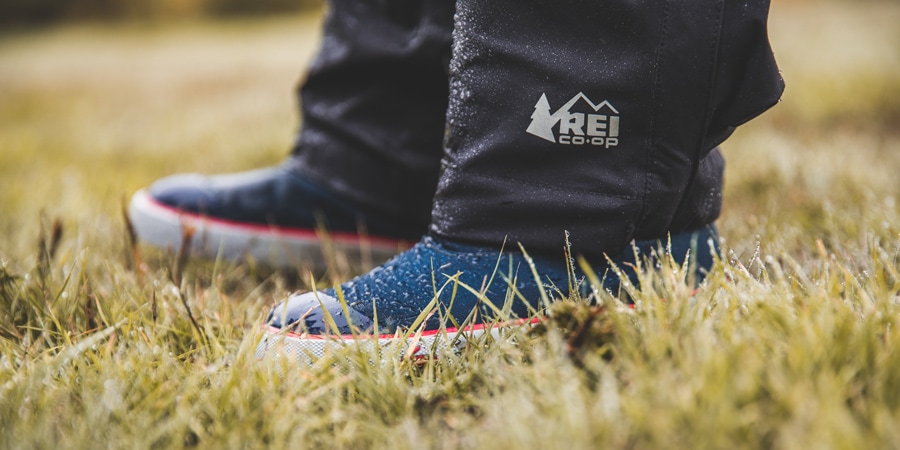
For hikes, toddlers don't need boots (sneakers will be fine) but bring extra socks to change into if there are puddles. Older kids, though, can really benefit from a quality pair of hiking shoes or boots. Think about how much pounding a kid can do while tromping on the trail, chasing friends and jumping off rocks. A good pair of hiking-specific boots or shoes will give them the support and traction that they need. And they won't be just a pair of shrunken adult shoes; they'll be built specifically for the anatomy of little feet. For cold weather, find a pair of warm snow boots that will keep your kids' toes cozy.
Look for Snow Features
You can get your little shredder snow pants and jackets with many of the same features as adult gear: snow gaiters, reinforced cuffs, snow pass holders and more. For the occasional sled run or snowball free-for-all, standard insulated outerwear should work fine.
Accessorize the Extremities
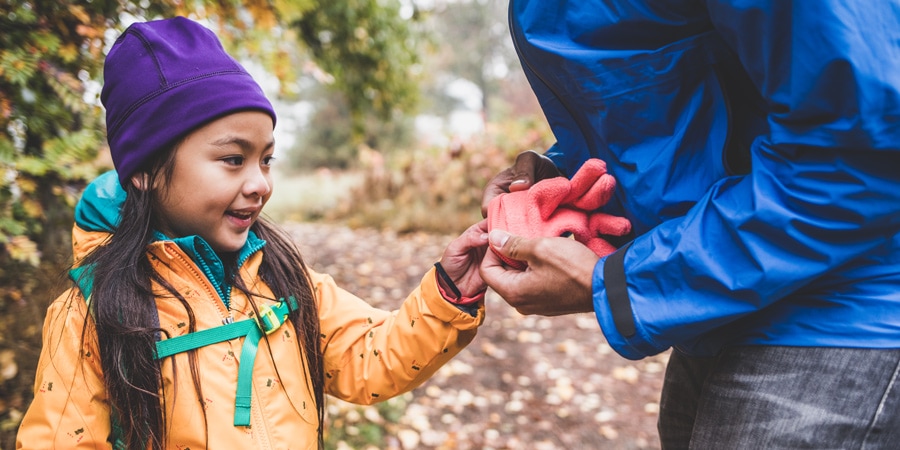
Don't forget key items like gloves, mittens, hats and warm socks, especially on cold days.
